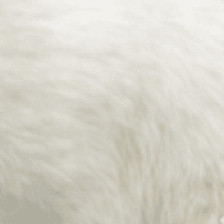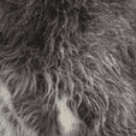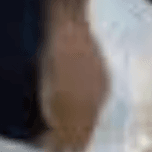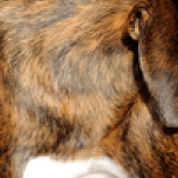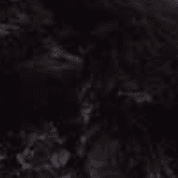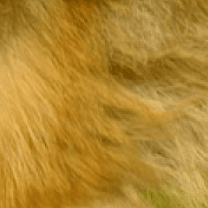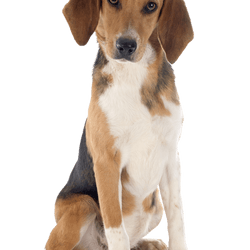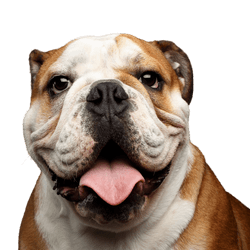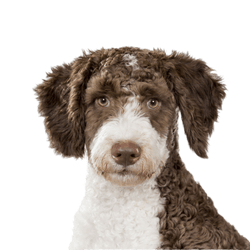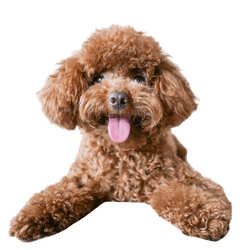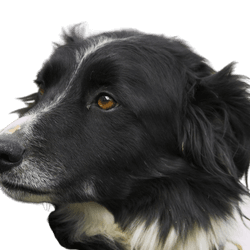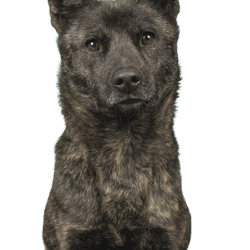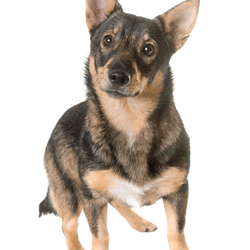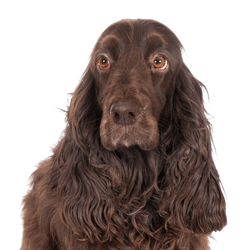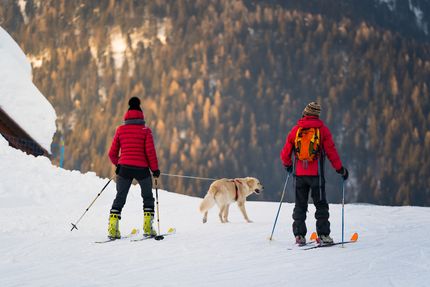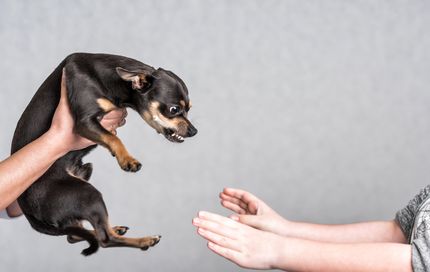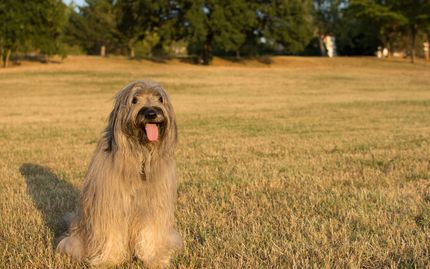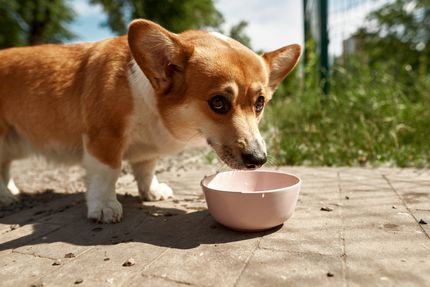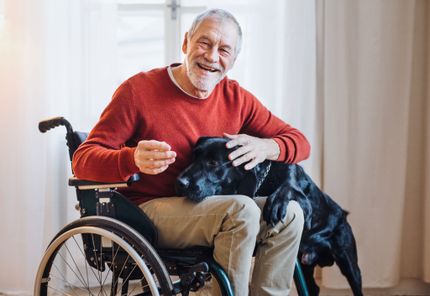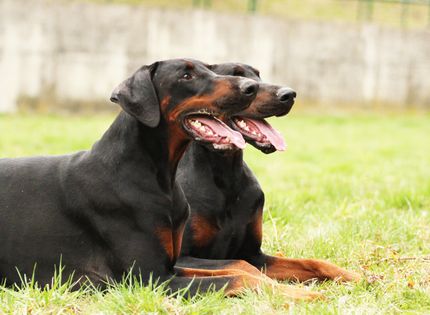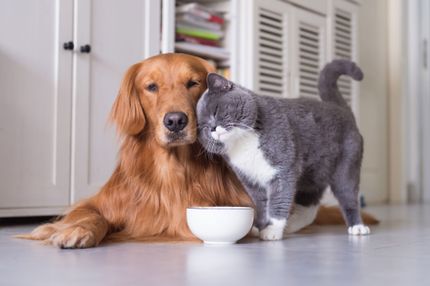Facts & Origin
Origin and history of the Tibetan Terrier
Exactly how long the Tibetan Terrier, also called "Tibetan", has existed is not entirely clear. However, the assumption is that he was already kept in a monastery about 2,000 years ago. A legend says that the breed was born there by chance: since the monastery was separated from the outside world for a long time after a natural disaster, only the dogs already living there could reproduce. Later he accompanied nomads on their tours in the high mountains and helped to drive goats to the summer meadows.
Since the Tibetan Terriers were kept in the highlands of Tibet, this breed has developed for climbing as well as due to the climate on the one hand movable claws, on the other hand a special coat, which protects against temperatures of +25°C and -40°C, as well as against sun, sand and snow storms.
Peacemaker and lucky charm
To this day, the Tibetan Terrier is considered a peacemaker and good luck charm in its region of origin. The belief in reincarnation prevented the breed from being exported to other countries. The religion forbade the Tibetans to trade with the animals. This only changed when Dr. Greig, a doctor from Great Britain, treated a Tibetan woman from a wealthy family in 1922: as a thank-you for the successful operation, the doctor received a white and gold puppy as a gift. Back home, she was so enthusiastic about the charming nature of the animal that she began to breed them herself. In 1930 she was recognized by the British Kennel Club.
Designation "Snow Lion
In his homeland, fans of the breed affectionately call the Tibetan Terrier "Snow Lion". One reason for this is that his round and flat paws look like snow shoes. They help the small quadruped to climb over rock and stone. You will probably also be surprised by his tremendous jumping power. Contrary to what its name suggests, the breed is not one of the terriers. In fact, the four-legged friends, also called Tibetan Apso, are herding dogs.
Suitability and attitude
The Tibetan Terrier is characterized by the FCI as a companion dog. He is especially suitable for active families. He can also be kept as a beginner dog.
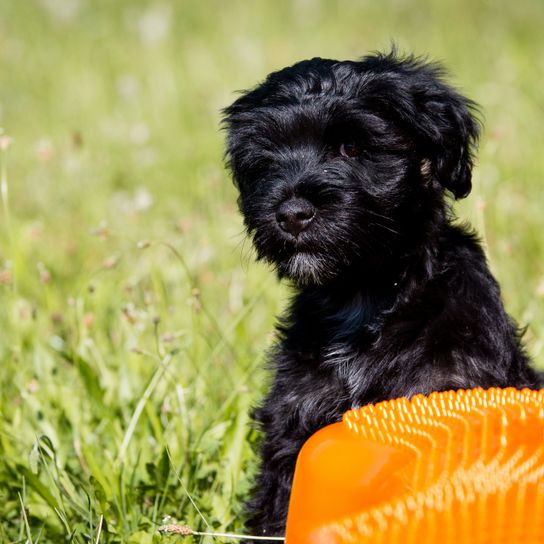
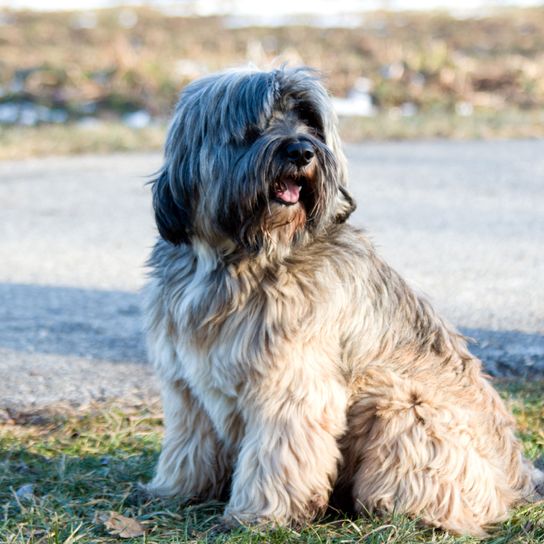
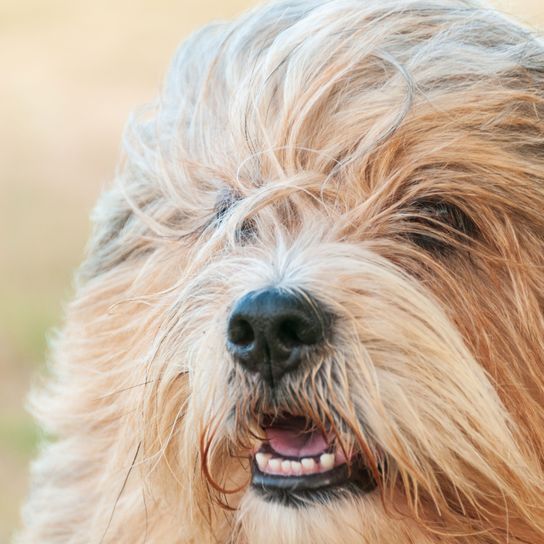
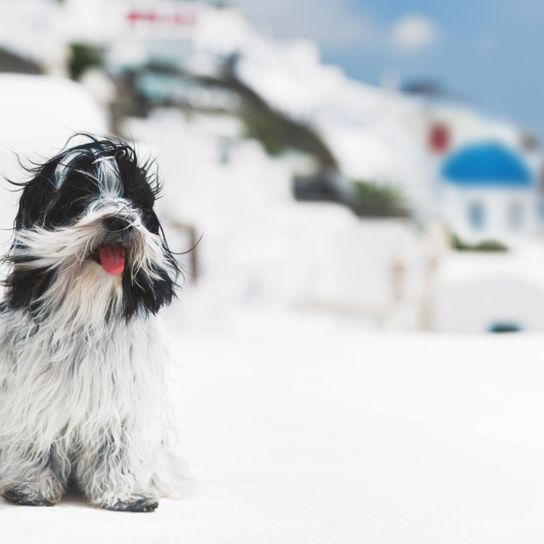
| Alternate Name | Tsang Apso |
| Origin | Tibet |
| Life expectancy | 12 - 15 years |
| Care requirements | high-maintenance |
| Activity level | average |
| FCI group | Tibetan breeds |
| AKC group | non-sporting group |
| KC group | utility group |
Tibetan Terrier mixes
Attitude, character and temperament of the breed
Typical character traits of the Tibetan Terrier
The spirited but good-natured Tibetan is sure to captivate you with his fun-loving nature. Without being impetuous, the loyal companion likes to go out of his way and at the same time possesses many engaging traits. The intelligent animal learns quickly and appropriates basic commands just as quickly, unfortunately, as undesirable behaviors - so consistent leadership is required from the beginning.
Towards strangers the breed proves to be reserved in the beginning but not quarrelsome, however, for his family he goes through fire. In addition, he is often very playful and has hardly any hunting instinct. He loves trips into nature and is best with active families.
Usage
Breed diseases and life expectancy of the Tibetan Terrier
Apso dogs seem to have allergies to certain foods from time to time. Also, some diseases occur more often, these include:
- Hip dysplasia
- Eye diseases
- Patellar luxation
But these are not more frequent than in other breeds. In general, the Tibetan Terrier is a healthy breed. A robust animal can easily reach an age of up to 14-16 years.
Tibetan purchase and breeding
Information about the breed and current litters can be found at the Austrian Club for Tibetan Breeds. Even though you may have to wait some time for a Tibetan Terrier, because they are rarely bred in Austria, it is worth buying from a reputable breeder. Then you usually have the possibility to get to know the parents and to have a look at the pedigree. In addition, reputable breeders have their animals tested to exclude hereditary diseases.
Another possibility is to take in a dog from an animal shelter or animal protection. Often these animals are given away through no fault of their own.

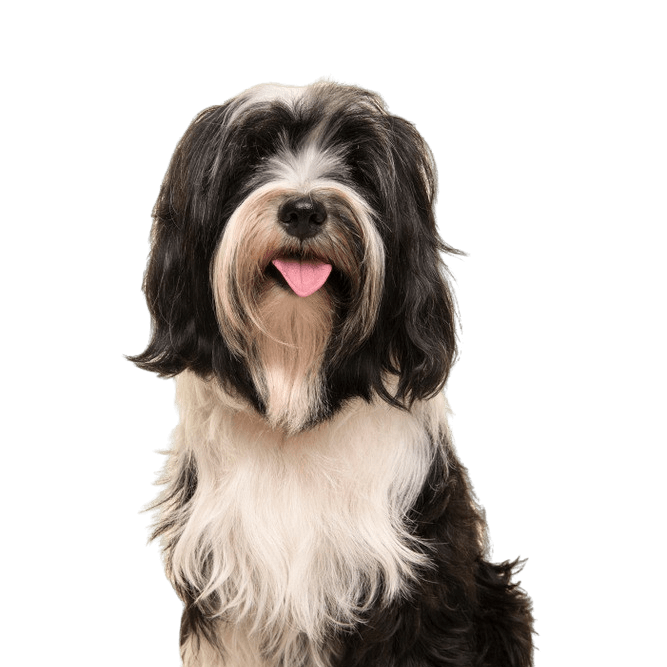
Breed characteristics of the Tibetan Terrier
The Tibetan is classified by the FCI as Group 9 (Companion and Society Dogs), Section 5 (Tibetan Dog Breeds). No working test is required.
This small dog breed has a prescribed shoulder height of about 36- 41 cm for males. Bitches are slightly smaller. They move briskly, effortlessly, but with good forward stride and powerful thrust. At the walk and trot, the hind legs should run neither inside nor outside the track of the front legs.
The head
The head is abundantly covered with long hair, which falls forward but not over the eyes and does not interfere with the dog's ability to see. On the lower jaw there is a small, but not exaggerated beard. All together gives a resolute expression.
The skull is of medium length, neither broad nor coarse, becoming somewhat narrower from the ears to the eyes. It should be neither domed nor completely flat between the ears and have a distinct stop, but not exaggerated.
The muzzle
On the strong muzzle sits a black nasal sponge. Its length from the eyes to the tip of the nose is equal to the length from the eyes to the occiput. The lower jaw of the Tibetan is usually well developed. The incisor row forms a slight arch, with the incisors regularly spaced and vertical in the jaw. A scissor bite or reverse scissor bite is typical of this breed. The zygomatic bone is curved, but not so overly pronounced as to be prominent.
The Eyes & Ears
Large and round, the dark brown eyes should be neither prominent nor deep-set, but fairly wide apart. The eyelids are black.
The Tibetan has V-shaped drooping ears, not too large or thickly attached to the head, set rather high on the sides of the skull and profusely furnished with hair.
The torso
Strong, muscular and of medium length, the neck allows the head to be carried above the back, giving an overall harmonious appearance. It merges into well placed shoulders and a well muscled, compact and powerful body with a straight upper profile line. The loins are short but slightly arched, while the croup is straight.
The Tibetan has fairly arched ribs with a well-reaching rib cage that reaches to the elbow.
The tail
The tail is of medium length, set rather high and carried happily curled over the back. It is also very profusely furnished with hair. A kink near the tip of the tail often occurs and is permissible.
The limbs
In general, the limbs are heavily furnished with hair. The shoulder and upper arm should be well sloping and of good length. The forelegs of the forearm are straight and parallel, while the pastern is slightly sloping. The well muscled hindquarters have well angulated hocks and stifles and low set hackles, giving a straight topline and thrust.
The paws are large, round and characteristically abundantly furnished with hair between the toes and pads. A breed specimen stands well flat on the pads and there is no bulge in the paws.
The coat
This breed has a double coat. The undercoat is fine and woolly, the lush, fine topcoat is neither silky, curly nor woolly, but long, smooth or wavy.
In terms of color, the Tibetan comes in white, gold, cream, gray or smoke, black, bicolored and tricolored. Thus, actually every color is permitted with the exception of chocolate liver brown or merle.
| Fur length | long |
| Fur | flat coated |
| Ear shape | Floppy Ear |
| Tail | rolled up |
| Anatomy | rugged |
| Size ♀ | 35 - 41 cm |
| Weight ♀ | 8 - 14 kg |
| Size ♂ | 35 - 41 cm |
| Weight ♂ | 8 - 14 kg |
| Suitable For | Children |
Colors
Known Diseases
Hip dysplasia (HD)
Hip dysplasia (HD) is a genetic condition in dogs where the hip joint is not shaped properly. This leads to pain, stiffness and restricted movement.
Diabetes
The metabolic disease diabetes often occurs in overweight dogs.
Breathing problems
Dogs with shortened muzzles can often experience respiratory problems.
Patellar luxation
Patellar luxation is the term used to describe a displacement of the kneecap, which is one of the most common causes of lameness in dogs.
FAQ
-
A Tibetan Terrier can also stay at home alone for the same amount of time as almost any other breed. With a lot of training, this is already possible at the age of a young dog. However, a dog should never be left alone for more than 3-6 hours.
-
Since the Tibetan Terrier does not undergo a change of coat, it does not shed. This is a peculiarity of the breed.
-
A Tibetan Terrier puppy costs about 2500 Euro.
-
No, the Tibetan Terrier is not a terrier. He got the name because of his size.
-
Yes, the coat of the Tibetan Terrier requires some care and attention.
-
Tibetan Terriers usually reach an age of up to 15 years.
-
Since the Tibetan Terriers were kept in the highlands of Tibet, this breed has developed for climbing as well as due to the climate on the one hand movable claws, on the other hand a special coat, which protects against from temperatures of +25 ° C and -40 ° C, as well as from the sun, sand and snow storms.
-
Synonyms for Tibetan Terriers are Tibetan and Snow Lion. Also, locals like to call them "little people".







